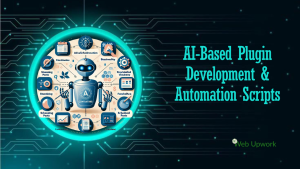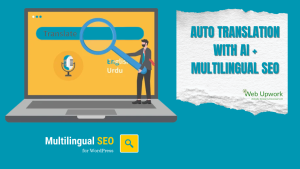Over the past few years, I’ve been watching how data-driven tools such as predictive analytics and recommendation engines are quietly transforming the digital landscape. In the world of websites, e-commerce and online services (areas that I engage with frequently through my WordPress work), these technologies are no longer “nice to have” but increasingly expected. Recently, a good piece in noted how predictive analytics is changing the very definition of ROI for Indian brands shifting from vanity metrics to real business outcomes. This signals that we’re entering a phase where “what will happen” is as important as “what did happen”.
In this blog post I share my perspective: what these tools are, why they matter, how I see them from a web-design and small business context (especially in India), and a few fun observations.
What are Predictive Analytics & Recommendation Engines?
Predictive Analytics is the practice of using historical data, statistical algorithms and machine‐learning techniques to identify the likelihood of future outcomes. For example, spotting which customers are likely to churn (i.e., leave), which products will sell well next quarter, or which marketing campaign will deliver the most value. A recent article stated: “Predictive analytics has revolutionised business intelligence by integrating technological sophistication with human insight.”
Recommendation Engines (or recommendation systems) are specialised systems that suggest items (products, content, services) to users based on their past behaviour, preferences, similar users’ behaviour, and other signals. Broadly speaking, they are built on predictive analytics and advanced filtering techniques.
So in simple words: predictive analytics asks “what is likely to happen next?”, and a recommendation engine uses that plus user signals to serve “what should this particular user see next?”.
Why they are becoming important now (especially in India)
From my observations, several converging trends are driving this:
Data volume and digital footprint
As more users engage online through mobile apps, websites, streaming, e-commerce the volume of data grows. With Indian internet penetration rising, this means there is richer data to mine. The article on e-commerce practices says recommendation engines analyse purchase histories, browsing behaviour and account data to suggest relevant products.Business pressure for measurable outcomes
The piece in makes a strong point: Indian brands are moving away from vanity metrics (impressions, clicks) and focusing on outcomes like lifetime value, churn reduction, future conversions.
For designers or site-owners, this means the websites we build must support not just presentation, but data capture, personalisation and measurement.Technology maturity & availability
Machine learning, cloud infrastructure, real-time analytics are increasingly available at affordable costs. One report on media subscription platforms found cloud-based predictive analytics frameworks enabled companies to reduce churn significantly and improve conversions.User expectation of personalisation
Users now expect relevant content — not a generic “one size fits all” website. They are used to platforms which know them (to some extent) and serve tailored suggestions (think songs, movies, shopping). If your website or service feels generic, you may lose engagement.
Implications for Web Design & Small/Medium Businesses
Being a WordPress web designer primarily working with freelance clients or small-to-medium businesses (SMBs), I’ve been reflecting on how these tools impact my work and my clients’ expectations. Here are the key implications:
Designing for Data Flow
When I build a site, I now factor in how user data will be captured (with consent), stored and analysed. For example: tracking which pages users visit most, time spent, conversion points, preferences. This data becomes the feedstock for prediction and recommendation. Without this, you cannot personalise meaningfully.Personalisation as a Differentiator
A website that suggests relevant next steps, products or content based on user behaviour stands out. For instance, if I build an e-commerce store, beyond the generic “you may also like” section, I might propose a “recommended for you” block based on browsing history or user segment. That aligns with how recommendation engines work.ROI-driven mindset
I advise my clients: “Let’s not just build a beautiful website, let’s build a website that helps you anticipate user needs and convert.” With predictive analytics, the website becomes a proactive revenue tool rather than just a brochure.
For example: identifying users likely to abandon cart and triggering a personalised reminder or discount. The e-commerce report mentioned cart abandonment reduction via behavioural predictions.Ethical / privacy / data-quality concerns
It’s tempting to dive into predictive analytics but there are important caveats. The “Predictive analytics: only the means to an end” article emphasises that complexity cannot be reduced to simplistic algorithms; human insight and ethical considerations matter.
For my clients, I always highlight: ensure you have user consent, be transparent about data collection, guard user privacy, and ensure you’re not making unfair predictions (bias, exclusion).Step-wise implementation for SMBs
Not every small business needs a full-blown AI team. From my experience, a phased approach works:Phase 1: Collect and analyse basic user behaviour data (e.g., page views, conversions, bounce rates).
Phase 2: Use rule-based recommendations (e.g., “users who looked at X also looked at Y”) within WordPress or plugins.
Phase 3: Upgrade to predictive modelling or recommendation engines once you have enough data and resources.
This approach is pragmatic and cost-effective.
Observations & Facts
The global recommendation engine market is projected to grow at a very steep rate (CAGR ~36.3% from 2025 to 2034) and reach USD 119.43 billion by 2034.
I found it interesting that multi-modal recommendation systems (i.e., those that combine text, images and context) are becoming more used meaning that in future, a website might recommend not only items based on browsing history but also based on images you show, or your voice search.
For small Indian businesses: the gap between ambition and execution is still wide. The article on Indian brands found only ~27 % currently use predictive models for real-time budget allocation.
This means that if you start early, you have an opportunity to stand out.
Challenges & What to Watch Out For
As much as I’m optimistic, there are hurdles:
Data quality & quantity: Predictive analytics and recommendation systems perform well when there is sufficient, clean, relevant data. For many small businesses the data is sparse or siloed.
Talent & tools: Implementing advanced models (e.g., machine learning) requires expertise and infrastructure. The Indian brands article pointed out that mindset and talent are as big a challenge as technology.
Blind implementation: Using algorithms without business context can lead to poor results. The Brand Equity article cautions that predictive analytics is “only the means to an end” and needs human insight.
Privacy & regulatory concerns: As personalisation deepens, so does the need for transparency. Users are more aware of data usage and there will be (and are) regulatory implications.
Cold start / new-user problem: Recommendation engines struggle with new users (little history). A site must address that scenario.
Website Designers & SMBs
From my practice and belief, here are actionable suggestions:
Start with user tracking: Ensure your WordPress site has analytics set up (e.g., Google Analytics, or a privacy-compliant alternative). Segment your users (by behaviour, by geography, by time on site).
Use simple recommendation plugins: For example, in an e-commerce context, use “customers who viewed this also viewed…” or “you may also like…” blocks. Test which sections users engage with.
Measure outcomes, not just impressions: Instead of just asking “how many visited”, ask “how many returned”, “how many purchased”, “what did they do after recommendation”.
Prepare for predictive modelling: Once you have sufficient data, you can work with data scientists (or use services) to forecast churn, probability of conversion, or recommend next best offer.
Build trust: On your site, include privacy policy, cookie notices, allow users to see why a recommendation is shown (transparency). This builds credibility.
Keep the human touch: Despite all data, the human element matters. Algorithms change, user contexts change. Periodically audit recommended items, ensure relevance from a human perspective.
Educate clients: As a designer, part of my role is to educate clients: “Yes, we can build this recommendation/analytics capability — but it requires time, data, budget and maintenance”. Set realistic expectations.
In sum, predictive analytics and recommendation engines are no longer futuristic buzzwords — they are increasingly foundational for digital success. For the web design and SMB community in India, this means shifting mindset: from building static websites to building intelligent, data-driven user experiences.
My view is that if you (or your client) can adopt even the early phases of this technology, you gain a competitive edge: better engagement, more conversions, deeper customer relationships.
Product Schema
{% if template.name == 'product' %}
<script type="application/ld+json">
{
"@context": "https://schema.org/",
"@type": "Product",
"name": "{{ product.title }}",
{%- if product.featured_media -%}
{%- assign media_size = product.featured_media.preview_image.width | append: 'x' -%}
"image": [
{{ product.featured_media | img_url: media_size | prepend: "https:" | json }}
],
{%- endif -%}
"description": {{ product.description | strip_html | json }},
"sku": "{{ current_variant.sku }}",
"mpn": "{{ current_variant.barcode }}",
"brand": {
"@type": "Brand",
"name": "District A Design"
},
"review": {
"@type": "Review",
"reviewRating": {
"@type": "Rating",
"ratingValue": "5",
"bestRating": "5"
},
"author": {
"@type": "Person",
"name": "Example site"
}
},
"aggregateRating": {
"@type": "AggregateRating",
"ratingValue": "5",
"reviewCount": "5"
},
"offers": {
"@type": "Offer",
"url" : {{ shop.url | append: variant.url | json }},
"priceCurrency" : {{ cart.currency.iso_code | json }},
"price" : {{ current_variant.price | divided_by: 100.00 | json }},
"priceValidUntil": "{{ 'now' | date: '%s' | plus: 31536000 | date: '%Y-%m-%d' | uri_encode | replace:'+','%20' }}",
"itemCondition": "https://schema.org/NewCondition",
"availability" : "http://schema.org/{% if product.available %}InStock{% else %}OutOfStock{% endif %}"
}
}
</script>
{% endif %}
BreadcrumbList Schema
<script type="application/ld+json">
{
"@context": "https://schema.org",
"@type": "BreadcrumbList",
"itemListElement": [{
"@type": "ListItem",
"position": 1,
"name": "Home",
"item": "https://Examplesite.com/"
},{
"@type": "ListItem",
"position": 2,
"name": "{{ product.title }}",
"item": "{{ shop.url }}{{ product.url }}"
}]
}
</script>





